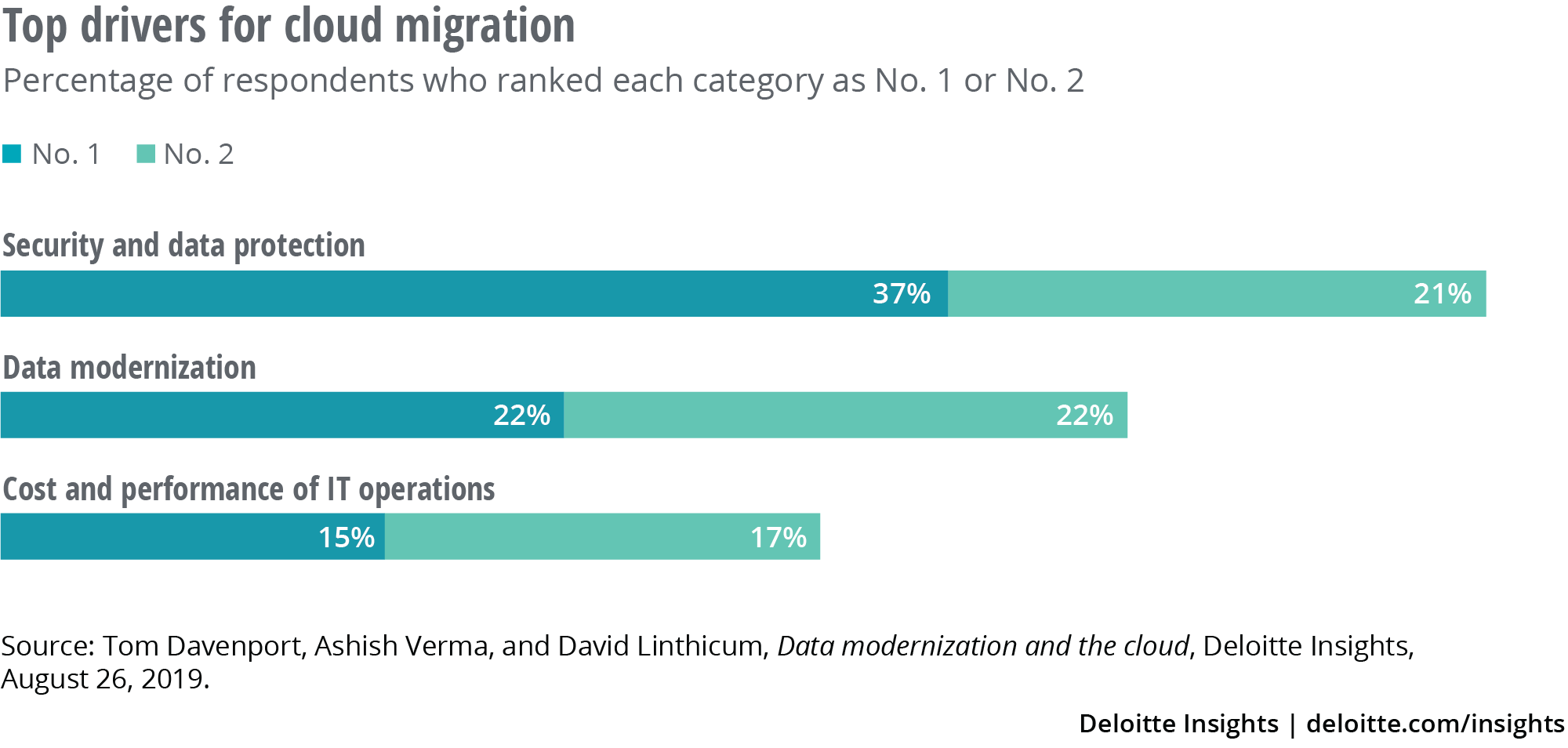Why organizations are moving to the cloud Security, data modernization, and cost among top drivers for cloud migration
4 minute read
05 March 2020
What's driving organizational efforts to move data to the cloud? As cyberattacks become more sophisticated, leaders are looking to bolster cybersecurity as well as shift from legacy to modern data platforms.

Cloud has become the primary location for businesses to store data; most have moved even their applications to cloud platforms, and many of those businesses that have their data on-premise today are soon planning to migrate to cloud. Companies across industries are modernizing their data platforms to leverage new-age applications and advanced analytics at the same time as they are moving their data to cloud. Indeed, a Deloitte study suggests that cloud and data modernization are highly interrelated and actually reinforce each other.1
Learn more
Read the most recent charticle on the future of satellite broadband
Explore the Thinking Fast series library
Subscribe and never miss a charticle
Learn more about Deloitte's services
Go straight to smart. Get the Deloitte Insights app
What drives IT executives to initiate cloud migration? Deloitte’s survey of more than 500 IT leaders and executives reveals that security and data protection is the top driver. With 58 percent of respondents ranking it No. 1 or 2, security is top-of-mind for everyone, from C-suite IT executives and senior leaders to IT managers and developers.
Cybersecurity attacks are rising in sophistication,2 and a shortage of skills means that many companies are struggling to manage security in-house. Some IT executives are turning to third-party cloud and managed security services, with cloud providers delivering sophisticated cyber capabilities and solutions3 and cloud offering the potential of helping to mitigate security incidents.4 These factors suggest that IT executives may be increasingly relying on the expertise of third-party cloud-based security and infrastructure providers to protect their data.
The No. 2 driver for cloud migration, data modernization, primarily involves moving data from legacy to modern databases. Fifty-five percent of the surveyed IT leaders and executives strongly agree that data modernization is a key component of, or a reason for, their companies’ shift to the cloud.5 Executives today need timely and targeted analytics on existing data; many rely on a stream of insights based on data mining, exploration, and prediction.6 And since much of that data is on cloud today—indeed, 91 percent of respondents noted that their companies store data primarily on the cloud—it is hardly surprising that leaders see cloud as essential to effectively modernizing companies’ data platforms.
Cost and performance of IT operations has long been a significant driver for cloud adoption. But cost has become less of a factor as cloud’s other business benefits have emerged. For instance, it can enable operational agility and greater efficiency.7 Cloud can also present a range of solutions and options from established tech vendors and supports enterprises’ digital transformation efforts.8
In forging ahead toward cloud, IT executives have encountered a range of challenges. Forty-seven percent recognize that “cloud is more complex than they expected.” To address this concern, technology companies providing cloud and managed services should work closely with businesses and support them on three main aspects as part of their cloud migration journey:
- Developing the right approach by ensuring clarity on the desired business outcome or end result
- Taking advantage of relevant talent and expertise to address companies’ core business issues
- Using appropriate toolsets that are user-friendly, secure, and viable in the long term
© 2021. See Terms of Use for more information.
More from the Technology collection
-
Tech Trends 2025 Article3 months ago
-
TMT Predictions 2025 Article4 months ago
-
Determining your future Business of Technology Article5 years ago
-
The digital consumer in 2020 Article4 years ago
-
A pragmatic pathway for redefining work Article5 years ago
-
How technology OEMs can guide channel partners into XaaS Article5 years ago














